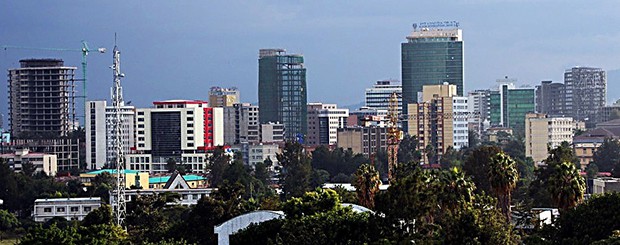Short Tours
Full day Addis Ababa City tour
EQST 002 Full day Addis Ababa City tour

We start at 8.30 with a pick up from your hotel and drive north up to Mount Entoto. In 1881 Emperor Menelik II made his permanent camp there, after remains of an old town (believed to have been the capital of 16th century monarch Lebna Dengel) were discovered, which Menelik thought was a divine and auspicious sign.
Addis Ababa at between 2300 – 2500 meters is the third highest capital in the world and Entoto is a few hundred meters higher – as we drive up the hill there is an appreciable drop in altitude and the air is filled with the scent of the Eucalyptus trees which line the road.
From the top, there is a panoramic view of the capital and surrounding countryside. Entoto is an important watershed, to the north water flows to the Blue Nile, to the south to the Awash River. Your guide will point out the important landmarks of the city.
The area around Entoto is now designated as Entoto National Park. There are now several bars, restaurants and coffee shops, even a lodge for those wanting to overnight there. There are viewing areas with telescopes, offering great panoramas of Addis Ababa and surrounding areas, and for the energetic visitor there are trekking routes and it is possible to hire bikes
Entoto was soon abandoned as a site for the capital – it was cold, difficult to provision and there was a shortage of wood. Empress Taytu was said to have led the move down to the plain of Finfine, and to have named the new capital Addis Ababa, or New Flower. However, two important structures remain within the old imperial compound, the churches of Mariam and the Archangel Raguel. It was in the church of Mariam that Menelik was crowned Emperor of Ethiopia in 1889, and in the small museum in the compound there are various clothes, court and household implements and weapons dating from the period. The church of Raguel is unusual in that it is octagonal, rather than round. There is a first story balustrade around which Menelik liked to stroll.
Leaving the churches we descend to Addis Ababa, stopping off at the National Archaeological Museum. Here visitors can see exhibits ranging from the 3.2 million year old bones of Lucy, through the Axumite and Gondarine periods to the monarchs Tewodros and Menelik.
We will take a break here for lunch – there are a number of possibilities, we could take lunch in one of the restaurants that serve western dishes or visitors may prefer to sample Ethiopian food at the atmospheric traditional restaurant.
After lunch we resume our tour with a visit to the Institute of Ethiopian Studies, where we can see clothing from different regions, along with artifacts, household utensils and in a separate section, paintings reflecting the history and culture of the country.
This building was once the Genete Leul Palace of Emperor Haile Selassie, and visitors can see his bedroom and bathroom.
We then move to the Mercato, the largest market area in Africa, where virtually every possible commodity is on sale, from livestock to computers. For the visitor good at bargaining, there is a huge selection of Ethiopian arts and crafts.
In recent years the government has engaged in several mega projects, designed to both beautify the city and provide places of interest and relaxation for both residents and visitors alike. These include a Science Museum, Library and Unity Park, the latter can provide the visitor with an understanding of Ethiopian history, politics and culture. For a visit to the park we should allow 2 – 3 hours.
We now return to our hotel. Tonight we will take our dinner in a national food restaurant, and see dancing from Ethiopia’s different regions.
Our partner-
